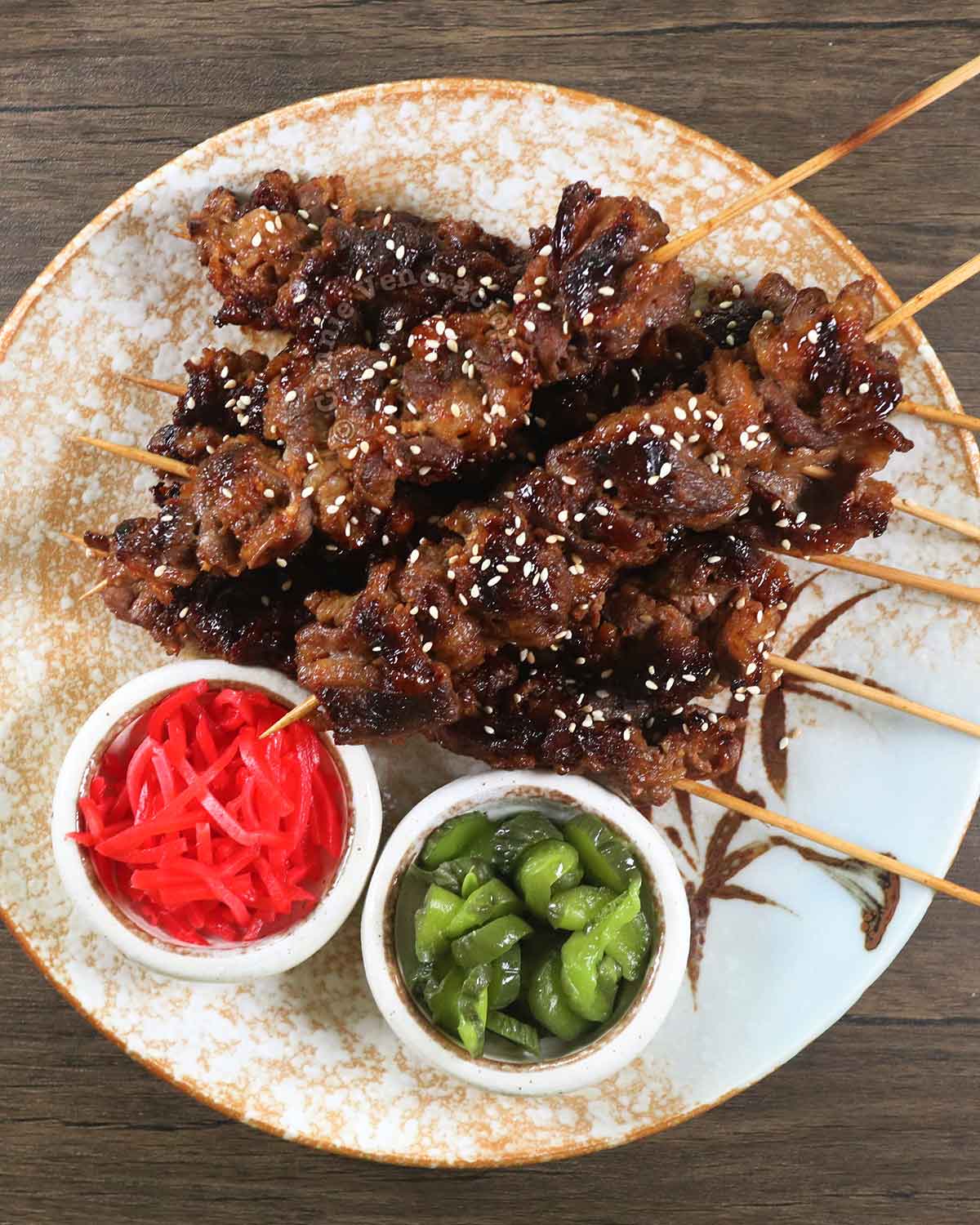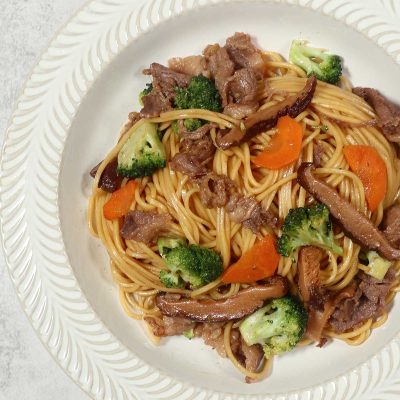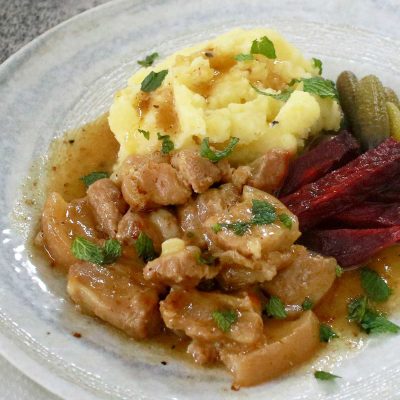It goes without saying, of course, that it won’t be a Korean dish unless the flavors are authentic. And that means using the correct seasonings for the marinade.
What is doenjang? Is it the same as miso paste?
Doenjangis Korean fermented soybean paste made withmeju(dried soybean bricks) and brine. That might sound like a description of miso paste butdoenjangis coarser, has a stronger flavor and isn’t sweet.
In an Asian grocery, Korean soybean paste is eitherdoenjangorssamjang. The latter is a spicy seasoned paste. To make sure that you’re getting the right thing, read beyond “soybean paste” on the label and find the part that saysdoenjang.
What is gochujang?
An fermented red chili paste, gochujang is sweetish due to the starch in the glutinous rice which is one of the ingredients. It is combined with doenjang and a few other ingredients to make ssamjang.
Can ssamjang be substituted for doenjang and gochujang?
I understand that for people who don’t cook Korean food at home all that often, it sounds more practical to buy just one paste instead of two. If you don’t like it, it feels less wasteful to throw out one tub instead of two. BUT…
To start with, ssamjang is a table condiment. Doenjang and gochujang are generally cooking ingredients. Still, in a very loose sense, you may substitute ssamjang for doenjang and gochujang to make the marinade for this dish. The downside is that it will be more difficult to make adjustments to suit your taste.
If you want something spicier, there’s no way to up the heat because you don’t havegochujang. If you want something less salty and you dilute the marinade with water, you dilute all the other flavors as well. So, I don’t recommend making the substitution.
With all that out of the way, this is how we cook Korean grilled beef skewers at home. The cooking time is quite short; it is the combined time for the preparation of the marinade and the marinating time that’s longer.
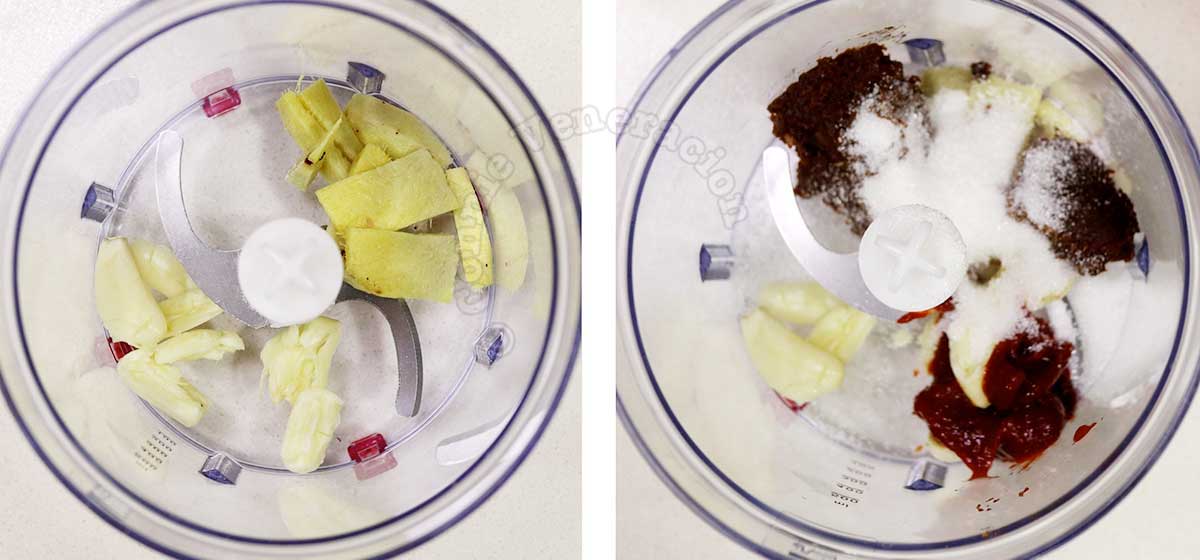
Measure the required amount of garlic and ginger, and drop into a food processor. Add the doenjang, gochujang and sugar.
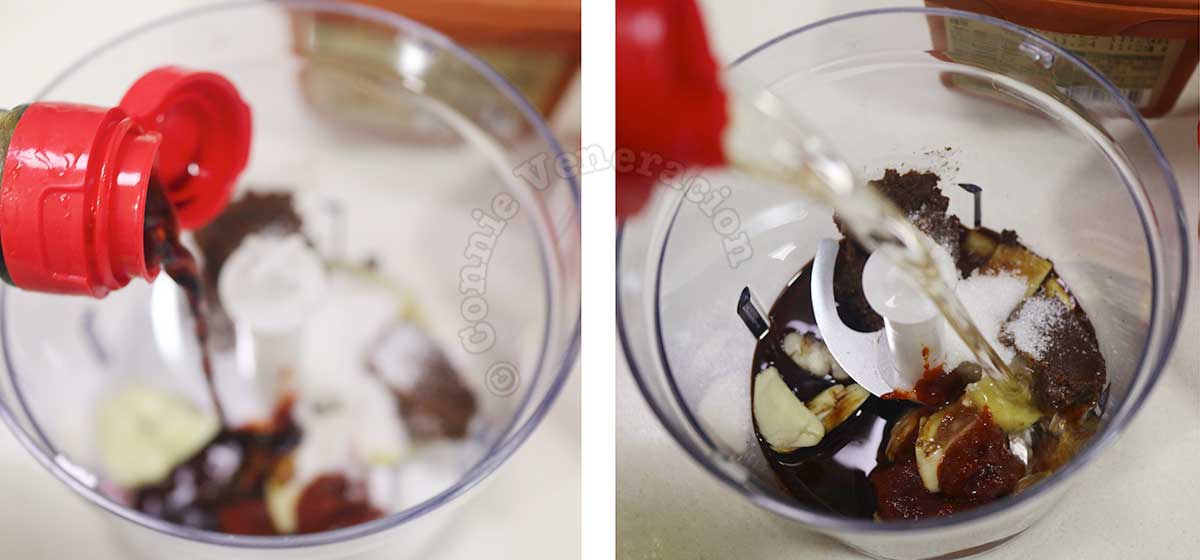
Pour in the required amount of soy sauce, rice vinegar, sesame seed oil and water. As you may already imagine at this point, yes, the marinade is salty, sweet and spicy, with all the umami flavors of the fermented Korean pastes.
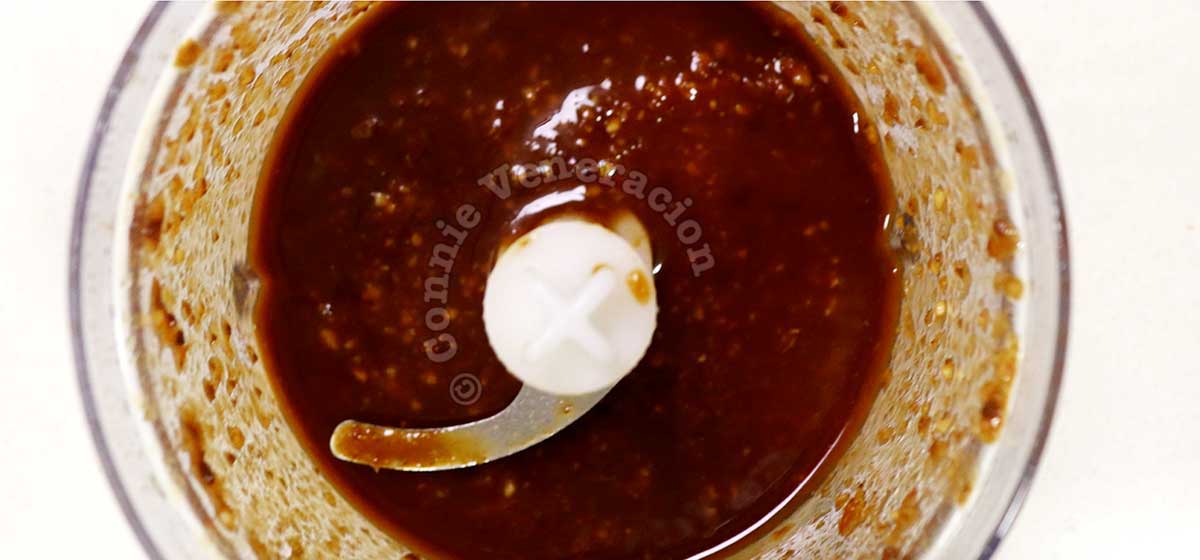
Process everything together. Whether the solid ingredients should be totally pureed or whether you want bits and pieces of garlic and ginger to remain visible is up to you.
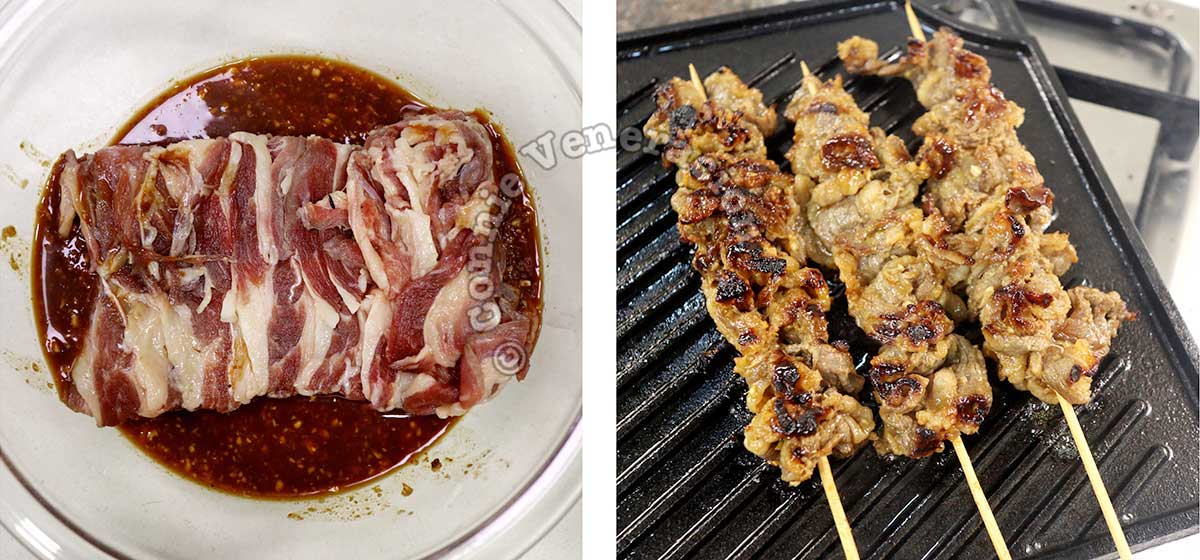
Now, marinate your beef. Pre-sliced beef, the kind used for bulgogi, is ideal for this dish. We prefer thinly cut short plate because the fat ensures that the beef skewers are ultra moist off the grill. If you prefer leaner cuts, go for sirloin, tenderloin, top round or bottom round, but definitely not a cut meant for stewing.
Whichever cut you use, note that these beef skewers require a short cooking time. Overcooking the beef will make it tough and rubbery.
Korean grilled beef skewers
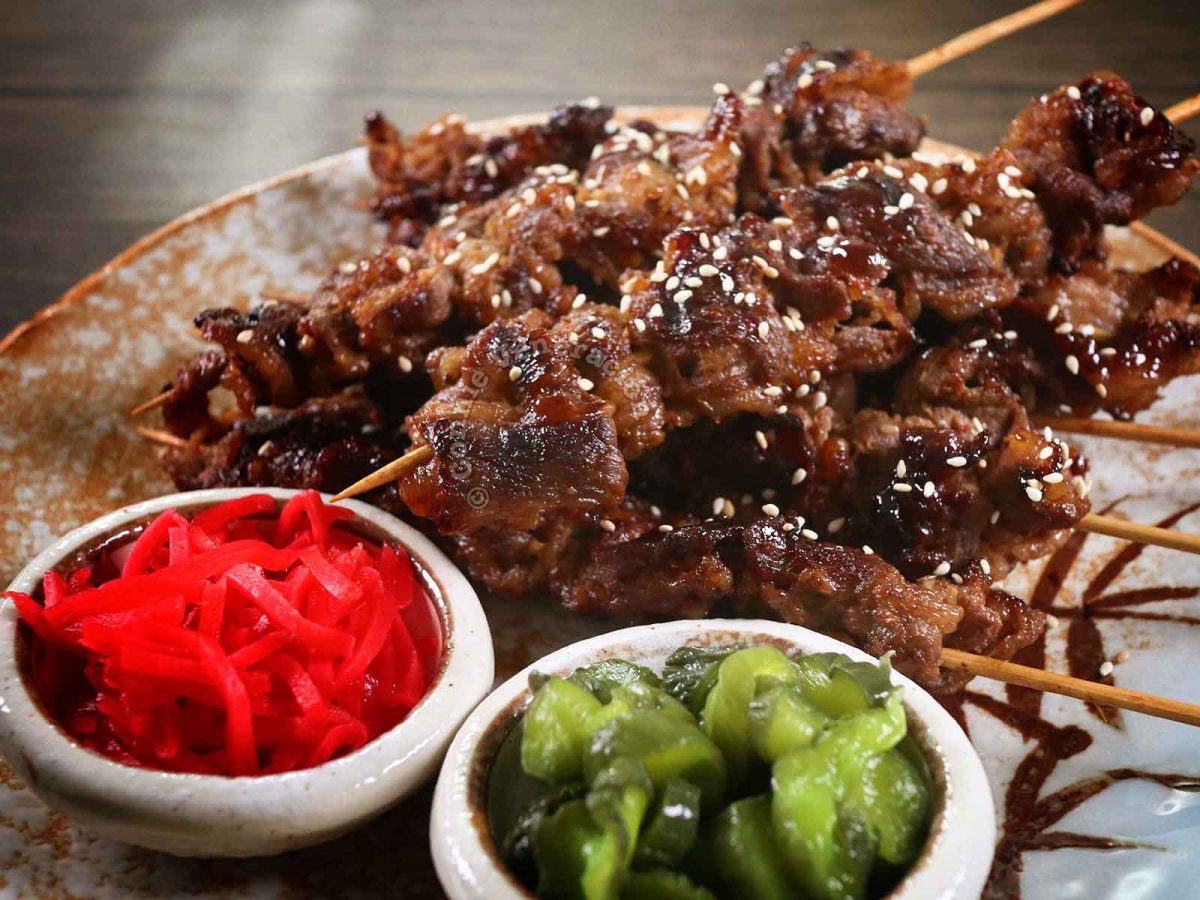
Ingredients
- 500 grams thinly sliced beef
Marinade
- 1 two-inch knob ginger peeled and sliced
- 4 cloves garlic peeled and lightly pounded
- 2 tablespoons doenjang
- 1 tablespoon gochujang
- 1 tablespoon sugar
- 2 tablespoons soy sauce
- 2 tablespoons rice wine
- 1 teaspoon rice vinegar
- 1 teaspoon sesame seed oil
Instructions
- Place the beef in a mixing bowl.
- In a small food processor or blender, drop in the garlic and ginger.
- Add the doenjang, gochujang and sugar.
- Pour in the soy sauce, rice wine, rice vinegar and sesame seed oil.
- Add a quarter cup of water and process to make the marinade.
- Taste and adjust the flavor, if you prefer.
- Add the marinade to the beef, mix well and leave for fifteen minutes (the meat will soak up all the marinade).
- Thread the beef with skewers.
- Heat the grill and cook the beef skewers over high heat, in batches if necessary to avoid overcrowding, about two minutes per side.
- Serve your Korean grilled beef skewers as an appetizer or with rice as a main course.

